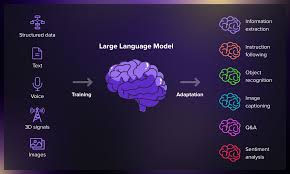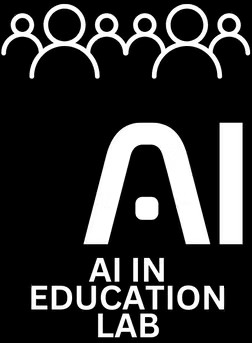What is AI ?

Definition

Artificial Intelligence (AI) is the ability of computers to perform tasks that normally require human intelligence—such as understanding language, recognizing patterns, solving problems, or learning from data
Application in Education

In education, AI is already part of everyday tools like ChatGPT, Google Translate, and adaptive learning platforms. It supports teachers by helping with lesson planning, marking, and personalizing learning for students.
Opportunities of AI

While AI doesn’t think or feel like a human, it uses data to make informed decisions. As it becomes more common in schools, AI brings powerful opportunities—and important questions—about how we teach, assess, and ensure fairness in learning.

What is AI?
Artificial Intelligence (AI) is a subfield of computer science that aims to develop machines and systems capable of performing tasks that typically require human intelligence.
According to John Mc Carthy, Father of AI,
"Artificial intelligence is the simulation of human intelligence in machines that are designed to think and act like humans."
You can think of AI as machines or systems that try to mimic human thoughts and actions. AI can perform tasks such as, recognizing speech, understanding natural language, visual perception, decision-making, and problem-solving and many more.
Key Terms
Machine Learning
Artificial Intelligence (AI) can be thought of as the entire process involved in making a sandwich, from recognising the need to eat, deciding what type of sandwich to prepare, understanding the required steps, assembling the ingredients, to ultimately making and consuming the sandwich. In essence, AI encompasses a wide range of tasks that simulate human intelligence, including perception, decision-making, and execution.
Within the broad domain of AI lies Machine Learning (ML). Machine learning refers to the ability of systems to improve their performance over time by learning from past experiences. Continuing with the sandwich analogy, consider the scenario where a sandwich does not taste as expected, perhaps due to too much mustard or too little lettuce.
Upon reflecting on this experience, you adjust the ingredients the next time to achieve a better outcome. This process of learning from data to make improved decisions characterizes machine learning.
Deep Learning
Deep Learning (DL) is a subset of machine learning that focuses on uncovering intricate patterns in large datasets using complex models known as artificial neural networks.
Returning to the sandwich metaphor, deep learning would involve analysing not only the quantity of mustard or lettuce, but also the specific brand, the optimal sequence of layering, the precise texture and temperature of the bread, and other nuanced factors that contribute to a perfect sandwich.
It represents a more advanced, fine-grained approach to learning that requires substantial data and computational resources to capture and model such complexity.
Artificial Narrow Intelligence, Artificial General Intelligence and Artificial Super Intelligence
Artificial Intelligence (AI) can be broadly categorised into three types based on the scope and capability of the systems: Artificial Narrow Intelligence (ANI), Artificial General Intelligence (AGI), and Artificial Superintelligence (ASI). These categories represent an evolutionary spectrum, from specialized systems to potentially superhuman intelligence.
Artificial Narrow Intelligence (ANI) refers to AI systems that are designed and trained to perform specific tasks with high efficiency. These systems operate within well-defined domains and lack the flexibility to transfer their capabilities to unrelated tasks. A prime example of ANI is a chess-playing AI that can outperform human grandmasters in chess, yet has no ability to compose an email or recognize a human face. ANI is the most common and widely deployed form of AI in use today.
Artificial General Intelligence (AGI), by contrast, aspires to create systems that exhibit human-like cognitive abilities. An AGI system would be capable of understanding, learning, and applying knowledge across a broad range of tasks, similar to the adaptability and general reasoning skills of a human being. Unlike ANI, AGI would not be confined to a single domain; it could write an email, play a game of chess, make coffee, or drive a car. However, AGI remains a subject of ongoing research and debate. While some researchers argue that AGI is still a theoretical concept, others believe that early forms of AGI may already be emerging.
Artificial Superintelligence (ASI) represents a hypothetical future stage of AI development in which machines surpass human intelligence in virtually all domains, including creativity, problem-solving, decision-making, and emotional intelligence. ASI would not only replicate human capabilities but significantly exceed them. This level of intelligence is currently speculative and has not yet been realized, but it continues to be a topic of interest and concern in discussions about the future of AI and its ethical implications.
In summary:
-
ANI excels at narrow, well-defined tasks.
-
AGI aims to match human versatility and cognitive ability.
-
ASI envisions an intelligence that far exceeds human capabilities in every dimension.
Generative AI
Generative Artificial Intelligence (Generative AI) is a specialised branch of artificial intelligence focused on creating new content rather than merely analysing, categorising, or reproducing existing data. Generative AI systems are capable of producing novel outputs across a wide range of formats, including text, images, audio, video, and even computer code.
These systems rely on advanced machine learning techniques, particularly deep learning and neural networks, to identify complex patterns in large datasets. Once trained, they can synthesise entirely new content that often mimics human creativity and expression.
Popular examples of generative AI include text-based tools like ChatGPT, image generators like DALL·E, and video generation platforms like Kling AI.
Prompt Engineering
As artificial intelligence becomes an increasingly integral part of our daily lives, the way we interact with AI systems is rapidly evolving. One of the most essential skills for effective human-AI interaction is prompt engineering, the practice of crafting clear, purposeful instructions or "prompts" that guide AI models to produce desired outputs.
A prompt can be as simple as a question or as complex as a multi-step instruction. Just as asking students a well-phrased question can spark deeper understanding.
A well-crafted prompt can help AI provide high-quality, relevant responses, whether that’s summarising a historical event, solving a maths problem, generating creative writing, or explaining scientific concepts. A good prompt can be described using a comprehensive structure called ICRSEFA (Instruction, Context, Role, Succinctness, Example, Format and Adjustment).
Here are several key principles for creating an effective prompt when working with AI tools like ChatGPT or other generative models:
1. Be Clear and Specific (Introduction & Succinctness)
Ambiguous or vague prompts lead to equally unclear responses. Define your goal clearly and provide as much relevant detail as possible
Example:
Tell me about history. (Not recommended: Too vague.)
Summarize the causes of World War I in three key points. (Recommended: This prompt is specific, focused, and clearly defines the desired output.)
3. Set a Desired Format or Structure for the Output (Format)
Tell the AI how you'd like the response presented, such as bullet points, a table, a step-by-step guide, etc., to make the output easier to use.
Example:
List three pros and three cons of social media in a bullet-point format.
2. Assign a Role to AI (Role)
You can guide the AI to adopt a particular voice, role, or style, which improves relevance and clarity.
Example:
As a career counsellor, give advice to a high school student unsure about choosing between arts and science streams.
4. Provide Context (Context)
AI performs better when it understands the background or purpose of your request. Add relevant context, such as intended audience, format, tone, or role.
Example:
Act as a science teacher explaining gravity to Year 9 students using simple language and everyday examples.
5. Use Step-by-Step Instructions for Complex Tasks (Adjustment)
Break down complex tasks into smaller steps or explicitly ask the AI to reason step by step.
Example:
Explain the difference between mitosis and meiosis, step by step.
Large Language Models (LLMs)
A Large Language Model (LLM) is an advanced AI system trained on massive amounts of text data to understand and generate human-like language.



Generative AI (GenAI)
Generative AI is a type of artificial intelligence that creates new content, like text, images, music, or even videos, based on what it has learned from existing data.



Hallucination
A common misconception is that "hallucination" is an experience involving the apparent perception of something not present, but that’s not the case. In computing, hallucination refers to when an AI system, like a language model, generates information that sounds correct but is actually false or made up.




How it works
Instead of giving the computer step-by-step instructions, we provide it with lots of data and let it find patterns or make decisions on its own. For example, if you show a machine many pictures of cats and dogs, it can learn to recognize them by identifying features like fur, shape, or size.



What it does
It powers tools like voice assistants, chatbots, and translation apps. Using techniques like tokenization and part-of-speech tagging, NLP bridges technology and human communication.


AI Literacy
AI literacy for the typical individual is the ability to comprehend, assess, interact with, and make informed decisions regarding artificial intelligence technologies in daily life. It involves the following five components [1]:
1. Understanding AI Concepts
This component involves developing a grasp of the basic principles and mechanics of artificial intelligence. It enables individuals to comprehend how AI systems work, including concepts like machine learning, neural networks, and data processing. Understanding AI concepts helps individuals engage with AI technologies more effectively, making informed decisions and being aware of the capabilities and limitations of AI systems.
3. AI Safety and Security
This component addresses the importance of considering the safety and security aspects of AI. It involves understanding the potential risks associated with AI systems, such as privacy breaches, algorithmic biases, or unintended consequences. Awareness of AI safety and security empowers individuals to protect their personal information, their digital footprint, advocate for responsible data practices, and make informed choices regarding the use of AI technologies.
2. Awareness of AI Applications:
This component focuses on recognising the diverse applications of AI in daily life. It involves understanding how AI is integrated into various domains, such as healthcare, education, finance, or entertainment. Being aware of AI applications allows individuals to seek out and utilise AI tools and services that can simplify tasks, enhance productivity, and improve their overall experiences within technology ecosystems.
4. Responsible AI Usage
The final component focuses on cultivating responsible and ethical AI usage. It entails recognising the limitations, biases, and ethical AI Literacy 33 considerations involved in AI systems. Individuals with responsible AI usage understand the importance of using AI technologies ethically and discerningly, avoiding overreliance or misuse. They actively engage in promoting fairness, transparency, and accountability in AI systems, fostering a balanced and informed relationship with technology.
5. AI Affectiveness for Human Emotions
This component emphasises the understanding of how AI can recognise, interpret, and respond to human emotions. It involves recognising the impact of emotional intelligence in AI systems and how they can adapt their behaviour based on human emotional cues. Understanding AI affectiveness for human emotions enables individuals to engage in more empathetic and emotionally intelligent interactions with AI technologies.
The above AI literacy framework represents a general understanding for the average individual. However, for different disciplines and different roles, there are other specific AI literacies. For example, in education for teachers and students, it may be necessary to consider specific AI literacy requirements based on the education level they're involved in, in addition to the basic level [1].
References:
[1] Chan, C. K. Y., & Colloton, T. (2024). Generative AI in higher education: The ChatGPT effect (p. 287). Taylor & Francis.
AI Guilt
AI guilt is defined as a psychological phenomenon wherein individuals feel guilt or moral discomfort when using AI tools, fearing that reliance on these technologies might be perceived negatively or as disingenuous [1].
There are three dimensions that characterize AI guilt [2]:
-
Perceived Laziness or Inauthenticity, where students feel their reliance on AI diminishes the value or authenticity of their work;
-
Fear of Judgment, which encompasses concerns about how peers, instructors, or future employers perceive AI use;
-
Identity and Self-Efficacy Concerns, where students doubt their own capabilities or question the role of human agency in academic achievement.
References:
[2] Chan, C. K. Y. (2025). Understanding AI guilt: the development, pilot-testing, and validation of an instrument for students. Education and Information Technologies, 1-20.
AI in Our Daily Lives
Artificial Intelligence (AI) is increasingly woven into the fabric of our daily lives. From the moment we wake up to the time we go to sleep, AI plays a subtle yet powerful role in shaping how we live, work, learn, and connect with others. Explore the sections below to discover the many ways AI is integrated into everyday activities.
Voice-Activated AI Assistants
AI powers virtual assistants that help simplify everyday tasks. You can ask Alexa to play music, Siri to set reminders, or Google Assistant to check the weather. These smart assistants process your voice commands and respond instantly, making your daily routines more efficient and hands-free.
Self-Driving Cars
Self-driving cars, also known as autonomous vehicles, use AI and advanced sensors (like cameras, radar, and LiDAR) to navigate roads with little or no human input. These vehicles are categorized into six levels of autonomy from Level 0 (no automation) to Level 5 (full automation in all conditions).
AI for Health and Wellness
Wearable devices like the Apple Watch or Fitbit use AI to monitor your health in real time. They track steps, heart rate, sleep patterns, and can even detect irregularities such as abnormal heart rhythms to promote healthier habits or alert you to potential issues before they become serious.
Personalised Social Media Experiences
AI determines which content appears in your social media feed. Platforms like TikTok and Instagram analyse your behaviour, including what you like, watch, or share, to recommend posts and videos tailored to your interests, keeping your experience engaging and personalised.
AI-Powered Navigation
AI enhances navigation tools by analysing real-time data such as traffic conditions, road closures, and accidents. Apps like Google Maps use this information to predict arrival times and suggest the fastest or most efficient routes, helping you avoid delays and reach your destination smoothly.
Instant Customer Support with AI Chatbots
Many businesses use AI-powered chatbots on websites and apps to provide instant customer support. These bots can answer common questions, assist with bookings or troubleshooting, and operate 24/7, which improves user experience and reduces wait times for human assistance.
AI in Daily Life

Do we need AI in daily life?
AI simplifies daily tasks, like voice commands through smart assistants or personalized recommendations on Netflix. It improves decision-making and tackles complex problems, such as detecting diseases. However, it raises concerns about privacy, job loss, and over-reliance on technology. While AI offers many benefits, it’s important to balance its use with potential risks. Responsible use ensures it improves lives without causing harm.

Real-life Examples
Smart Assistants (E.g., Siri, Alexa, Google Assistant)
AI powers virtual assistants to make daily tasks easier. For example, you can ask Alexa to play music, Siri to set reminders, or Google Assistant to check the weather. These assistants understand your voice commands, process your requests, and respond instantly.

Real-life Examples
Navigation Apps (E.g., Google Maps, Waze)
AI makes navigation apps smarter. They analyze live traffic, accidents, and other factors to give you the fastest route to your destination. For example, Google Maps uses AI to predict how long your trip will take and suggest alternate routes.

Real-life Examples
Social Media Algorithms (E.g., Instagram, TikTok, Facebook)
AI decides what posts or videos you see on your feed. For example, Instagram shows you content based on your interests, and TikTok recommends videos you’re likely to enjoy by analyzing your viewing habits.

Real-life Examples
Health Monitoring (E.g., Fitness Apps, Smartwatches)
Devices like Fitbit or Apple Watch use AI to track your health. They monitor steps, heart rate, sleep patterns, and even detect irregularities, like an abnormal heartbeat, to help you stay healthy or notify you of potential issues.
AI in Education: Opportunities and Risks
References:
[1] Chan, C. K. Y., & Hu, W. (2023). Students’ voices on Generative AI: Perceptions, benefits, and challenges in Higher Education. International Journal of Educational Technology in Higher Education, 20(1). https://doi.org/10.1186/s41239-023-00411-8
[2] Chan, C. K. Y., & Colloton, T. (2024). Generative AI in higher education: The CHATGPT effect. Routledge.





